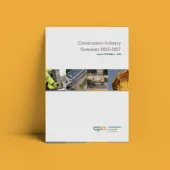Construction bounces back in second quarter

Survey shows conditions improving across all construction sectors and throughout supply chain
THE latest Construction Trade Survey, published this week, shows that conditions in the second quarter of 2013 improved across all construction sectors and throughout the supply chain.
Even small and medium-sized businesses, which were hardest hit by the downturn, reported their first rise in activity since 2007. Private housing was one of the key contributors to the improving workloads, together with a ‘catch-up’ across many sectors following a poor first three months of 2013, when adverse weather significantly affected output.
Industry prospects are also showing signs of improvement, with manufacturers, specialists, civil engineers, and SME contractors all reporting more orders for future work.
Commenting on the survey, Noble Francis, economics director at the Construction Products Association, said: ‘Construction growth in the second quarter is encouraging. As house building – boosted by Help to Buy until 2016 – is a key driver, this growth should be sustained. We must recognize, however, that this growth builds on the first quarter’s historically low level when output was its worst since 2001.’
He continued: ‘Forecasts from the Association anticipate that construction output will rise 2.2% in 2014 and a further 4.5% in 2015, driven by both private housing and infrastructure. To ensure growth in infrastructure, it is essential that all the announcements we have heard over the past three years actually turn into activity on the ground. This has not happened so far, as infrastructure output fell 13% last year.’
Stephen Ratcliffe, director of the UK Contractors Group, said: ‘The improvement in construction activity is encouraging, though any improvement should be set against the difficult conditions of the last few years. The survey shows increased workloads for contractors in the second quarter, but the majority still report falling order books.
‘Bringing forward public sector investment in construction projects will help sustain any recovery. The Government has recognized the importance of the construction sector, and the industry will continue to work with ministers to develop a clearer pipeline of work in order to build further industry confidence.’
Julia Evans, chief executive of the National Federation of Builders, added: ‘The return of confidence and the fruits of some government schemes are beginning to show measurable results. However, we must not take our eye off the ball as a sustained recovery needs a continuing, sustainable level of investment.
‘While, as an industry, we do not expect to return to pre-2008 levels of activity, it is important to ensure that investment continues – particularly the investment that is dependent on future spending cuts.’
Key survey findings include:
- 72% of building contractors reported a rise in building work on an annual basis, on balance, compared to flat output in Q1.
- Building activity increased across all sectors with improved conditions most frequently reported in housing.
- 42% of contractors working on private housing developments and 40% of contractors working on public housing developments reported rises in output year-on-year, on balance.
- Light-side product sales were broadly unchanged versus Q1, on balance, but 14% of heavy-side companies saw sales increase on a quarterly basis in Q2, on balance.
- Civil engineering workloads were broadly unchanged for the third consecutive quarter with 2% of respondents indicating that sales fell from a year ago, on balance. Orders increased, however, according to 5% of respondents, on balance.
- SMEs reported the first rise in annual output since 2007 Q4 and 5% of firms reported a rise in enquiries, on balance.
- According to 11% of large and medium-sized contractors, overall new work orders fell on an annual basis, on balance.
- Tender prices fell according to 26% of specialist contractors, on balance, and 31% of companies indicated that margins declined.
- Cost pressures increased and 58% of contractors, on balance, indicated that costs were higher on a quarterly basis.









